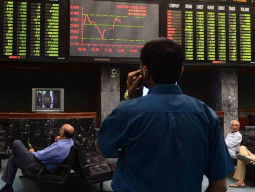
While per capita income in Pakistan has unquestionably increased rapidly over the past decade, that growth hides a disturbing fact: even as household incomes for the urban middle class have continued to rise, the rural poor have continued to see their real incomes decline.
Using data from the Household Integrated Economic Survey, compiled by the Pakistan Bureau of Statistics, The Express Tribune has put together a special report on income and consumption patterns among Pakistani households. We have utilised the numbers from the 2002, 2006, 2008, and 2011 reports – the latest four available.
Our analysis revealed a shocking fact: for every period during the past decade, the real (inflation-adjusted) incomes of the top quintile of urban Pakistani households has continued to rise, while that of the bottom quintile of rural Pakistanis has continued to fall. This trend holds true during every single interval examined: between 2002 and 2006, when the economy was expanding rapidly; between 2006 and 2008, when it was tapering off; and even between 2008 and 2011, when the economy slowed down almost to a halt.
The implications of this fact are troubling. It means that, for the poorest Pakistanis, even the rapid economic growth of the Musharraf era has meant nothing. Their incomes continued to fall in real terms, even as the rest of their compatriots continued to grow richer – some of them stupendously so.
Uneven all around
That growth in Pakistan is uneven is a fact that is observable even through anecdotal evidence. Empirical data, however, points to some interesting details.
For instance, over the past decade, the regions that have seen the fastest income growth are urban Punjab and urban Khyber-Pakhtunkhwa, where the top quintile in particular has done remarkably well, seeing their incomes rise by 3.79% per year in real terms. Simply put, even after accounting for inflation, the average middle class household in urban Punjab or Khyber-Pakhtunkhwa was 40% richer in 2011 than they were in 2002.
The worst off, somewhat surprisingly, was rural Sindh, where incomes for the bottom 20% of households declined by an average of 4.42% per year in real terms for the past decade. The poor in rural Balochistan did surprisingly well, growing at close to 4% per year in real terms, but that was because Balochistan’s incomes started from an abysmally low base and were playing catch up with the rest of the country.
Variation in the middle
The real difference between the various periods of economic growth, then, comes from what happens to the overwhelming majority of Pakistanis who are not in the middle class, but not destitute either. It is their fortunes that vary the most depending on what happens to the GDP growth rate. It was this middle, for instance, that suffered the most when the economy was slowing down in 2007 and 2008; more so even than the poor. The top 20% were the least affected, seeing their incomes decline by an average of only 0.5% per year in real terms during those two years.
The income data also shows the motivation of people to migrate to urban areas: average incomes in urban areas are about 42% higher than in rural areas. These differences are especially magnified in the middle three income groups, representing about 60% of the population. And even when the household income differences are not large, individual prosperity is likely to be higher in urban areas, since household sizes are lower, meaning there are fewer people sharing the same amount of money.
For those wondering about the record of the current administration, their record is somewhat surprising. Despite the fact that the ruling Pakistan Peoples Party relies mostly on rural voters for its electoral success, the party has actually been better for urban areas. Incomes in urban areas rose by an average of 1.1% per year in real terms during the first three years of the PPP government, compared to a 0.8% real decline per year in rural areas.
Published in The Express Tribune, July 30th, 2012.


1732623521-0/bitcoin-(1)1732623521-0-270x192.webp)















COMMENTS
Comments are moderated and generally will be posted if they are on-topic and not abusive.
For more information, please see our Comments FAQ